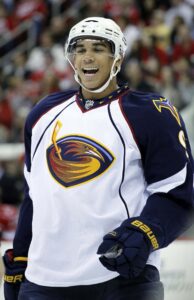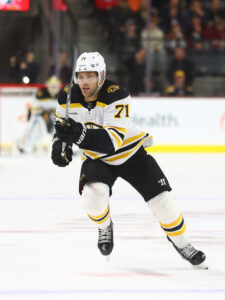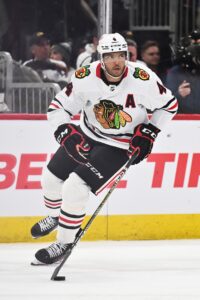The Detroit Red Wings haven’t been back to the playoffs since their historic streak ended in 2017, but GM Steve Yzerman, head coach Derek Lalonde, and the whole Red Wings organization have plans on ending that drought this year. Despite the highly competitive nature of the Atlantic division, the Red Wings have added major talent to their roster over the last two years and are hoping to reach the playoffs next season on the back of that veteran talent combined with some intriguing young stars. But in a division that has sent a finalist to the Stanley Cup Final in each of the last five seasons, will that be possible?
Draft
1-9: F Nate Danielson, Brandon (WHL)
1-16: D Axel Sandin-Pellika, Skellefteå (SHL)
2-41: G Trey Augustine, USNTDP (USHL)
2-42: D Andrew Gibson, Soo (OHL)
2-47: D Brady Cleveland, USNTDP (USHL)
3-73: F Noah Dower-Nilsson, Frölunda (J20)
4-117: D Larry Keenan, Culver Academy (USHS)
5-137: D Jack Phelan, Sioux Falls (USHL)
5-147: F Kevin Bicker, Mannheim (GER U20)
6-169: G Rudy Guimond, Taft (USHS)
7-201: F Emmitt Finnie, Kamloops (WHL)
The Red Wings have invested heavily in centers in recent years, both in free agency and at the draft table. They signed Andrew Copp and J.T. Compher to deals north of $5MM AAV and invested top-ten picks in Austrian center Marco Kasper and Canadian pivot Nate Danielson. Danielson is a professional two-way center who had a strong draft year for the Brandon Wheat Kings and is widely projected as a future second or third-line center.
Sandin-Pellika played pro hockey in his draft year for Skellefteå and was considered one of the higher-upside blueliners in his class, especially offensively. On day two, the Red Wings reached into their backyard grabbing a Michigan State commit and potential goalie of the future in Augustine as well as Cleveland, a stay-at-home blueliner. Keenan, the team’s fourth-round pick, was drafted straight out of high school hockey but has tantalizing physical tools.
Trade Acquisitions
F Alex DeBrincat (from Ottawa)
D Jeff Petry (from Montreal)
F Klim Kostin (from Edmonton)
The centerpiece of Yzerman’s offseason is the acquisition of DeBrincat from the Senators, a division rival.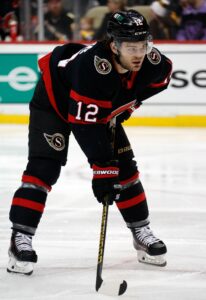
Surrendering Dominik Kubalik and a first-round pick to get the deal done, Yzerman managed to add a two-time 40-goal scorer who happens to be right in the thick of his prime.
DeBrincat won’t turn 26 until December and is locked into a $7.875MM AAV contract through 2026-27.
Even if DeBrincat plays more as he did in Ottawa than how he played next to Patrick Kane on the Chicago Blackhawks, the Red Wings will still have added a 66-point scorer into their top six, which will do wonders to improve the production of other members of their top-six, such as Dylan Larkin, Lucas Raymond, and Andrew Copp, for example.
Seeing as they didn’t have to commit a huge amount of term to DeBrincat, this trade has a chance to be an absolute grand slam for Yzerman. The acquisition of Petry adds a notably less flashy player to the Red Wings lineup but a nonetheless effective one. Petry isn’t what he once was now that he’s turning 36 years old, but the Ann Arbor, Michigan native can still hold his own in a top-four and contributed 31 points in just 61 games last season. He’s undeniably worth the $2.34MM cap hit he’s owed for the next two years.
Kostin is the lowest-profile addition of this trio but his acquisition via trade gives the Red Wings an intriguing name to plug into their bottom-six. Kostin’s NHL career looked to be on life support before a trade to the Oilers sparked a run of strong performances for the 2017 first-round pick. Kostin plays a powerful game and should improve the Red Wings’ bottom-six and overall forward depth.
Key UFA Signings
F J.T. Compher (five years, $25.5MM)
D Justin Holl (three years, $10.2MM)
D Shayne Gostisbehere (one year, $4.125MM)
F Daniel Sprong (one-year, $2MM)
G Alex Lyon (two-years, $1.8MM)
G James Reimer (one year, $1.5MM)
F Christian Fischer (one year, $1.125MM)
When looking at most of the Red Wings’ free agent signings, a clear strategy emerges. Detroit chose to invest heavily in improving their defense, goaltending depth, and bottom-six forwards.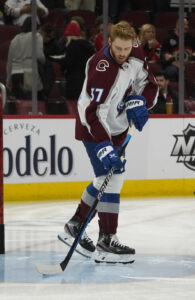
Compher is the outlier to that, as he’s expected to play in a prominent middle-six center role. He had a breakout 2022-23, scoring 17 goals and 52 points, but seeing as that’s the outlier number so far in his career it’s fair to question whether he’ll be able to repeat that kind of offensive performance.
If he can’t, he still has a solid two-way game to provide a floor to the level of value he provides, which is useful. But unless he can reach 50 points in Detroit $5.1MM on a five-year term will look like a real expensive price to pay for a solid if generally unremarkable middle-six center.
While Holl’s mistakes drew some harsh criticism at times during his tenure with the Toronto Maple Leafs, he has averaged at least 20 minutes per night in each of the last three seasons.
A $3.4MM price tag with a three-year term is a high price to pay for what Holl provides, to be sure, but there is some context that could explain why Yzerman made this signing. The Red Wings’ right-shot defensive depth took a major hit with the trade of Filip Hronek to Vancouver, so adding Holl gives Lalonde an experienced name to fill that void.
It’s important for a GM to give capable players to his coach so that the coach can succeed, so now it’ll be up to Lalonde to deploy Holl in ways that will help Holl look good, not for more than he’s capable of as many believe Holl was in Toronto.
In Gostisbehere, the Red Wings add a productive offensive defenseman who resurrected his career on the Arizona Coyotes and should serve as the team’s most reliable offensive threat from the blueline outside their top pairing.
Up front, the Red Wings added Sprong, a player who scored 21 goals and 46 points from largely fourth-line minutes in Seattle, and Fischer, who is an energetic bottom-six forward with some valuable leadership qualities. Sprong will help provide some offensive juice to the bottom six while Fischer will likely play in a more traditional fourth-line role.
In Lyon and Reimer, the Red Wings have made significant improvements to their goaltending depth. While Reimer was shaky, to say the least, last season, he does have an extensive track record of quality play in the NHL. Should he falter, Detroit now has Lyon to save the day, something he did with the Florida Panthers last season when his .914 save percentage in 15 games lifted them to the Stanley Cup Playoffs.
These additions aren’t as flashy as the team’s addition of DeBrincat, to be sure, but they’re strategic investments in areas of the roster that were major weaknesses last season, even if in the case of Holl and Compher they came on the expensive side.
Key Departures
F Pius Suter (Vancouver, two years, $3.2MM)
F Filip Zadina (San Jose, one year, $1.1MM)
F Alex Chiasson (Boston, PTO)
G Magnus Hellberg (Pittsburgh, one year, $785k)
F Adam Erne (UFA)
G Alex Nedeljkovic (Pittsburgh, one year, $1.5MM)
D Robert Hagg (Anaheim, one year, $775k)
The biggest-name loss on this list is easily that of Zadina, the 2017 sixth-overall pick. Zadina never quite found his game in Detroit and ultimately gave the team very little in return for the significant asset they invested in him, save for a 28-game run in 2019-20 where he flashed some real promise and scored 15 points.
The most effective player Detroit is losing is Suter, 27, who scored 14 goals and 24 points last season. Detroit is undoubtedly upgrading at third-line center if Compher ends up playing in that role, although Suter did score 36 points in 2021-22 and Detroit could surely still find room for that kind of player. Suter just wasn’t able to find consistency in Detroit, and with the Red Wings making a serious playoff push they simply needed to find a more reliable player to fill the role Suter played, even if that player came at a far higher price tag.
Jettisoning Nedeljkovic and Hellberg to bring in Reimer and Lyon represents a full makeover of the Red Wings’ goaltending depth behind starter Ville Husso. Nedeljkovic arrived in Detroit with quite a bit of promise but his reliance on his athleticism was exposed behind the Red Wings’ porous defense, and he heads to Pittsburgh seeking greener pastures. Hellberg, 32, will join him and potentially take up a role as Pittsburgh’s number-three goalie.
Salary Cap Outlook
The Red Wings’ significant outlays this summer have left them in a tighter cap position than years past, but the flip side of that is that their roster is significantly improved as well. The Red Wings have paid high prices to get high-quality players in the door, but some of their most significant costs are yet to be determined. Both Raymond and Moritz Seider will need new contracts before next season, and those two players figure to be two of the most expensive Red Wings moving forward, with Seider holding the potential to receive a highly lucrative long-term deal as one of the top young blueliners in the NHL.
Key Questions
Who will be the Red Wings’ second-line center?: This question isn’t exactly the right one, as we know who will start the year as Detroit’s second-line center: either Copp or Compher. But the important question is who will end up claiming that role moving into the future, seeing as the Red Wings have two quality center prospects in their pipeline in Kasper and Danielson. Will Compher reward Yzerman’s faith and his $5.1MM price tag? Will Copp improve on a first year in Detroit that saw him score only nine goals? Or will both veterans falter as the team pivots towards Kasper or eventually Danielson as Dylan Larkin’s long-term understudy?
Who claims the backup goalie role?: A 475-game NHL veteran, Reimer is undoubtedly the front-runner here. But after posting an .890 save percentage last season, he’s vulnerable. Alex Lyon has largely been a third goalie throughout his pro career. Will that finally change this season in Detroit?
Photos courtesy of USA Today Sports Images.
